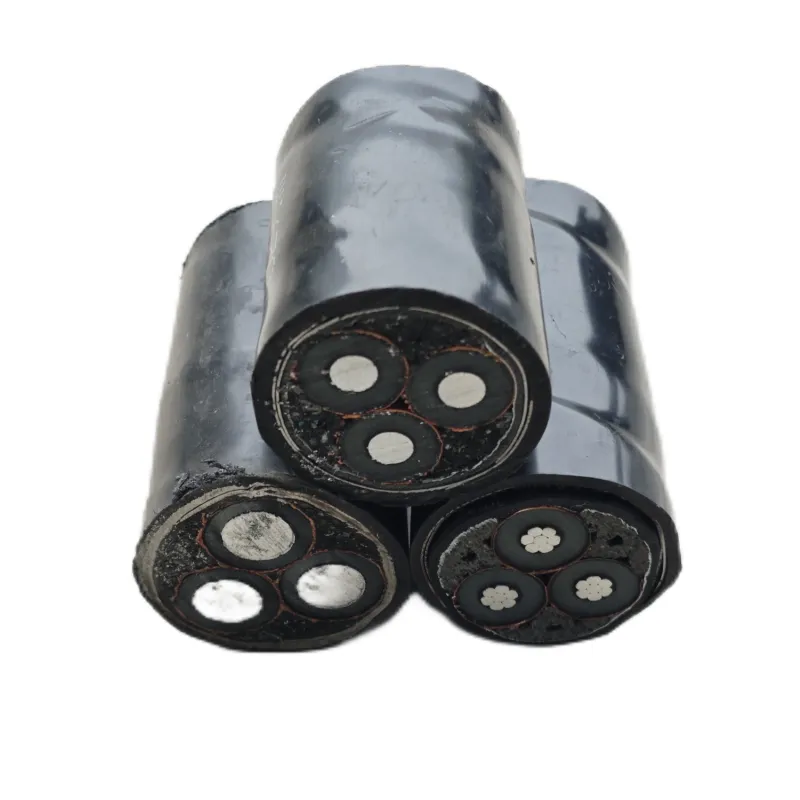Time: 2025-04-27 16:28:50 Source: Henan Province Jianyun Cable Co., Ltd.
Cable management solutions refer to the tools, techniques, and systems used to organize, protect, and route cables in various settings, ensuring safety, efficiency, and aesthetics. From homes to industrial setups, proper cable management is essential for maintaining electrical and communication systems. This article explores cable management solutions through three key sections, using a table to list common tools and engaging analogies to clarify concepts.

Cable management solutions encompass a range of products and practices designed to organize, protect, and route cables, preventing tangling, damage, or interference. These solutions apply to various cables, including power cables (e.g., 14-2 NM-B for house wiring), control wires (e.g., 24V for automation, as discussed earlier), solar cables (e.g., 4mm² for PV systems), and communication cables (e.g., Ethernet, fiber optics).
The primary goals are to enhance safety (e.g., avoiding exposed wires), improve system performance (e.g., reducing EMI), and maintain a clean, professional appearance. For example, in a solar installation (as discussed in Saudi Arabia’s projects), cable management ensures 4mm² solar cables are neatly routed from panels to inverters, avoiding UV damage or tripping hazards.
Cable management solutions are like “organizers” for a messy desk—they keep everything in place, making your workspace (or electrical system) safer, more efficient, and easier to navigate.
Cable management solutions vary depending on the application, environment, and cable type. Below is a table summarizing common types:
| Solution | Description | Typical Use |
|---|---|---|
| Cable Trays | Metal or plastic trays for routing cables | Industrial setups (e.g., factories) |
| Conduits | Pipes to encase cables for protection | Home wiring (e.g., 14-2 NM-B) |
| Cable Ties/Clips | Plastic or metal ties to bundle cables | Office setups, solar installations |
| Cable Sleeves | Flexible sleeves to bundle and protect | Computer desks, telecom bundles |
| Wire Ducts | Slotted channels for organizing wires | Control panels (e.g., PLC wiring) |
Cable Trays: Used in industrial settings to route large numbers of cables (e.g., power and control wires in factories), providing support and easy access for maintenance. They’re often made of galvanized steel or aluminum.
Conduits: Rigid or flexible pipes (e.g., PVC, metal) that encase cables, protecting them from damage and EMI. For example, 14-2 NM-B in a home might be run through PVC conduit to meet NEC standards (as discussed earlier).
Cable Ties and Clips: Simple solutions to bundle or secure cables, like tying 4mm² solar cables along a panel frame to prevent sagging or securing LT overhead lines to poles (as discussed in overhead contexts).
Cable Sleeves: Flexible fabric or plastic sleeves that bundle multiple cables, often used in offices or telecom setups (e.g., fiber optic bundles in Saudi smart cities) to reduce clutter and protect against abrasion.
Wire Ducts: Slotted plastic or metal channels used in control panels (e.g., for PLC wiring, as discussed in control wire contexts), keeping wires organized and accessible for troubleshooting.
These solutions are like “storage bins” for cables—each type is designed for a specific “shelf” (application) to keep things tidy and functional.
Cable management solutions offer several benefits and are applied across various settings, ensuring safety, efficiency, and longevity of electrical and communication systems:
Practical Example: In a solar installation, cable ties secure 6mm² solar cables along the panel frame, while a conduit protects the run to the inverter, ensuring UV resistance (per IEC 61730) and minimizing voltage drop. In an office, a cable sleeve bundles Ethernet cables, preventing tripping hazards and maintaining a tidy workspace.
Cable management solutions are like “traffic rules” for cables—they guide each wire to its lane, preventing chaos and ensuring smooth operation.
Cable management solutions are tools and techniques (e.g., cable trays, conduits, ties, sleeves, ducts) used to organize, protect, and route cables in settings like homes (14-2 NM-B), industrial setups (control wires), solar systems (4mm² cables), and telecom networks (fiber optics). They enhance safety (e.g., preventing shocks), reduce interference (e.g., minimizing EMI), improve efficiency, extend cable life, and improve aesthetics. Applications range from residential wiring to solar installations and offices, ensuring compliance with standards like IEC 60227 and IEC 61730. Proper cable management is essential for safe, efficient, and professional electrical and communication systems.